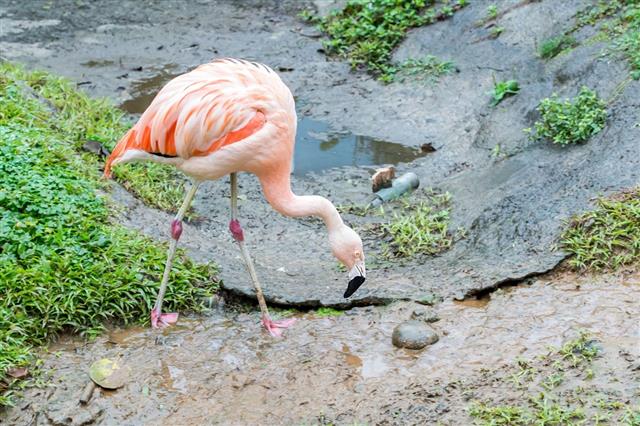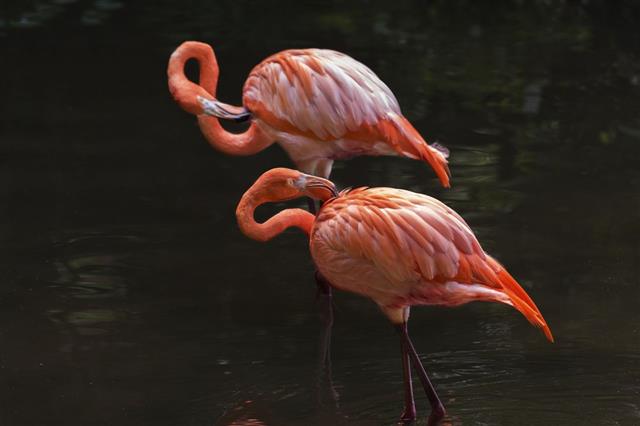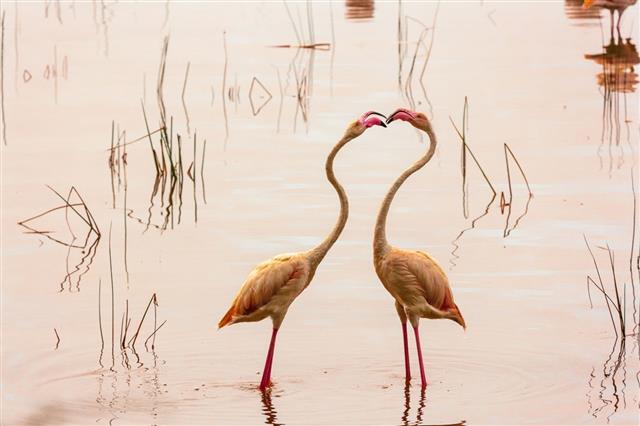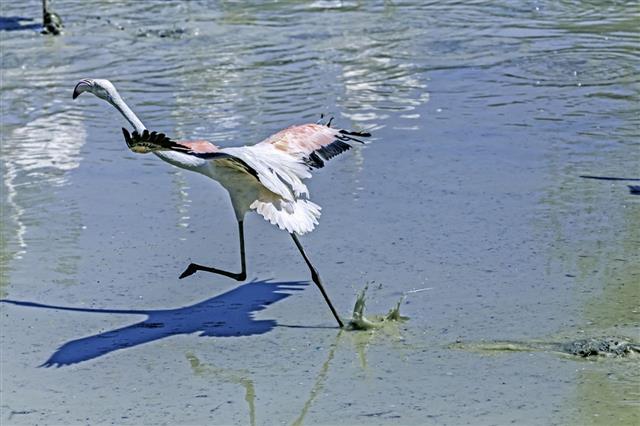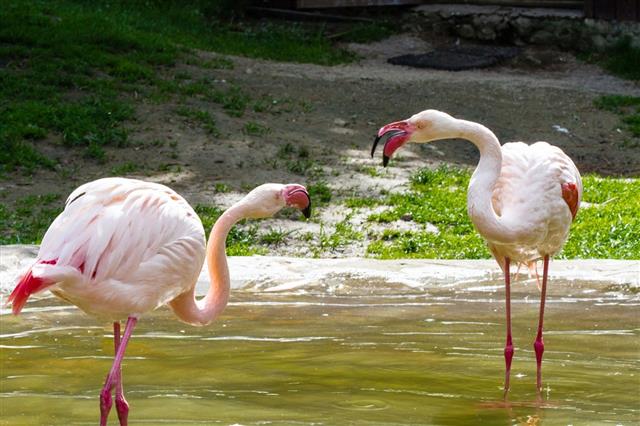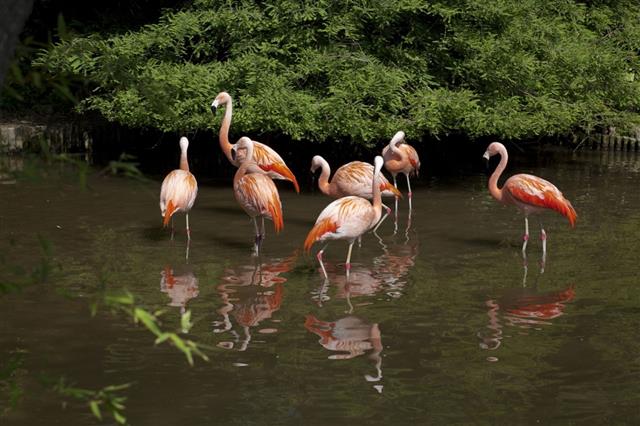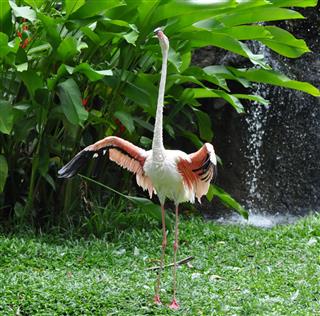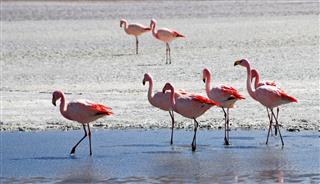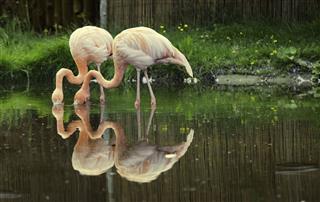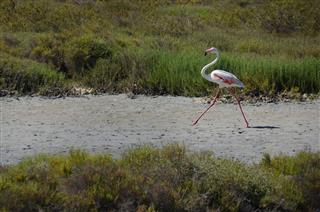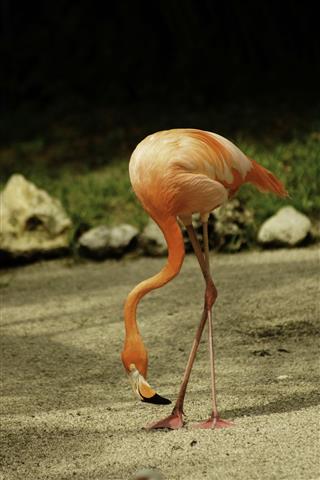
Did you know that the flamingo’s pink color is associated with its diet? A flamingo’s diet plays a major role in its appearance and other habits.
Flamingos Secrete Milk for Their Chicks!
The newborn flamingo chicks are exclusively fed with the red-colored ‘crop milk’ secreted from the upper digestive tract of adult birds. Both the parents produce this milk, which is regurgitated and fed to the chicks, for around two months.
Flamingos are fascinating birds with a pink plumage and some amazing features. They are found in different parts of the world, especially the tropical and subtropical regions of Africa, Asia, Europe, and America. These birds are found in both fresh and saline water. The flamingo habitat includes lagoons, estuaries, mangrove swamps, mud flats, large shallow coastal and inland lakes, and tidal flats. Usually, flamingos are found in groups that wade through shallow waters in search of food.
There are six species of flamingos, and their body color ranges between pale pink to bright pink, crimson, and vermilion. In fact, the name flamingo is derived from the Latin word ‘flamma’, which means flame, indicating their plumage color. The characteristic features of flamingos include their long legs and boomerang-shaped beaks. It is said that the color of these birds is derived from their diet.
Flamingo Diet
The Newborn Chick feeds on its parents’ milk, and has a Grayish-white Coat
The plumage color of the flamingo is due to its diet. However, the bird is not born with the pink plumage. The newborn chick has a gray or whitish coat that is retained for around two to three years. The parents feed the newborn chick with their crop milk for around two months. The milk is reddish, as it contains the pigment canthaxanthin. This pigment is stored in the liver of the chick, so that it can be used later. The parents’ plumage color fades during the feeding period.
The Plumage Color Changes as the Chick Starts Feeding
The chick starts feeding on its own, within 30 to 42 days of birth. However, the parents feed the chick till they reach two to three months of age. Once it reaches 6 to 10 months of age, the coat turns dark gray, flight feathers develop, and its beak and legs begin to turn pink. The pinkish coloration develops gradually, as the chick becomes a subadult. The plumage color deepens as the bird reaches sexual maturity.
The Flamingo’s Distinctive Color is Derived From Its Diet!
n short, the flamingo diet contains foods that are rich in carotenoid pigments, like canthaxanthin. However, its food preference may vary from one species to another. In general, a flamingo feeds on blue-green and red algae, small crustaceans, worms, and seeds. Its diet includes small fish and molluscs too. Consumption of brine shrimp and algae is said to be the main reason for the characteristic plumage color of the flamingo.
Feeding Habits and Adaptations
Beak Structure and Food Preference
The flamingo uses its keeled beak to collect food from water. The tongue as well as the beak have bristle-like structures that help in filtering food from the water that is taken inside the mouth. The shape and structure of the beak vary between different species.
While some species have deep-keeled beaks, others have shallow-keeled beaks. Greater, Caribbean (American), and Chilean flamingos have shallow-keeled beaks. Andean, lesser, and James’ flamingos have deep-keeled beaks. A shallow-keeled beak has a comparatively wider upper part and gape at the sides. A deep-keeled beak has a narrower upper part and gape at the dorsal surface of the bill.
The flamingos with deep-keeled beaks have a relatively fine filter, and they are capable of filtering minute particles, like single-celled plants. These flamingos mainly feed on algae and diatoms. Flamingos with shallow-keeled beaks have a coarse filter, and they trap molluscs, crustaceans, small fish, and insects that are around an inch in length.
The Flamingo has Distinctive Feeding Habits
A flamingo searches for food with its head upside down in water. The bird skims the water surface with its boomerang-shaped beak. In this position, the flamingo moves its head sidewards, thereby collecting water along with food. It is the tongue of the flamingo that acts like a pump to suck in water, which is expelled after filtering. The tongue of this bird has ridged plates that can trap food particles. Unlike the lower beak, the upper bill is not fixed to the skull facilitating filtration.
The Caribbean flamingo has a very slow rate of filtration ― 4 to 5 times a minute. It consumes around 270 grams of food per day. Though the lesser flamingo needs only 60 grams of food, its rate of filtration is around 20 times per minute. Recent studies show that the flamingo has erectile tissues on the floor of the mouth, lying on both sides of the tongue. These tissues stiffen and make the tongue erect and stable while feeding.
An interesting fact about flamingos is that, even though these birds feed from saline water, they drink only fresh water. They need at least four gallons of water per day.
Flamingos may stamp the water surface for a better catch. Sometimes, they may walk through the water and catch small fish using their beaks. Flamingos may also feed from the bottom of the water body. They are also seen walking through shallow water, dragging their beaks; so as to leave a trail on the mud, thereby collecting food.



